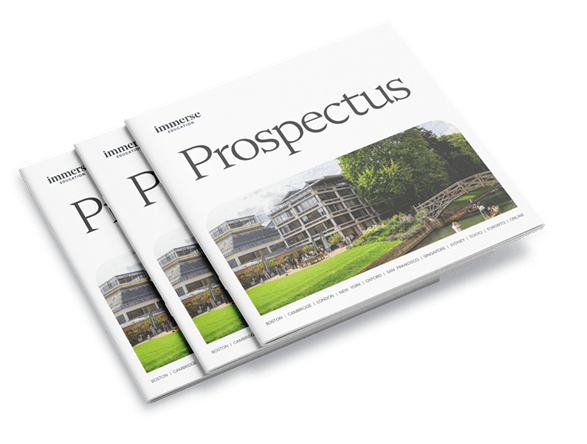Writing an abstract is a crucial skill for students and researchers alike. Asking how to write an abstract for a research paper? The answer lies in creating a concise yet comprehensive summary that presents the very core of your work. The abstract of any scientific paper functions as a self‑contained piece, offering readers enough information to understand the study’s purpose, methods, findings, and significance without needing to read the full paper. In many ways, it is both a window and a filter – inviting readers in while helping them decide whether the paper meets their needs.
Abstracts have been a feature of academic writing for more than a century, becoming particularly standardised in the sciences during the twentieth century as journals multiplied and researchers needed efficient ways to scan vast amounts of literature. Today, abstracts are not just academic conventions; they are essential tools of research communication, ensuring your work is discoverable through databases, search engines, and citation indexes.
Wondering how to write your research paper? Check out our sister article here.
What Does a Research Paper Abstract Include?
Most abstracts fall between 150 and 300 words, though requirements vary by discipline and publication. Despite their brevity, they carry a lot of weight, serving as the first (and sometimes only) part of a paper many readers encounter. A strong abstract addresses several key questions:
- What is the research about? State the problem, context, or research question.
- Why does it matter? Explain the significance or gap your work addresses.
- How was it done? Summarise your methods or approach concisely.
- What are the main findings? Highlight only the most important results.
- What do those findings mean? Indicate your conclusions or implications.
When done well, the abstract is a standalone snapshot of your study that conveys the value of your research in a tightly structured way.
When Are Abstracts Necessary?
Abstracts are used across academic contexts whenever a piece of research needs to be shared, evaluated, or archived. They are standard for:
- Journal articles submitted for peer review
- Conference papers where selection often depends on abstracts alone
- Theses and dissertations as a summary for examiners and library catalogues
- Grant proposals where abstracts function as concise project summaries
In other contexts, such as undergraduate essays or smaller projects, abstracts may not be mandatory, but learning how to write an abstract for a research paper at any level develops skills of summarisation, clarity, and academic communication.
Why Abstracts Matter
Because the abstract is usually read before anything else, it directly affects how your research is perceived. A vague or unfocused abstract can discourage readers from engaging further, while a clear, well‑structured abstract signals professionalism and credibility. For this reason, abstracts are often called the “gateway” to research: they open access to your work in databases, conference proceedings, and journal platforms.
Join the Immerse Education 2025 Essay Competition
Follow the instructions to write and submit your best essay for a chance to be awarded a 100% scholarship.

Types of Abstracts
When preparing an academic paper, your abstract plays a crucial role in helping readers quickly determine whether your work is relevant to their interests. Abstracts vary not only in length and style but also in function, depending on the discipline and the intended audience. Broadly, they fall into a few distinct categories, each serving a different purpose and suited to different kinds of writing.
What Is a Descriptive Abstract?
A descriptive abstract outlines the scope and purpose of the work without offering detailed results or conclusions. It is usually very brief—sometimes only a few sentences—and functions more like a table of contents or an extended title. You’ll often see descriptive abstracts in the humanities and social sciences, where the aim is to guide readers towards the subject matter rather than to summarise findings.
What Are Informative Abstracts?
An informative abstract is the most common type, especially in scientific and technical fields. It provides a concise summary of all the major aspects of the research, including the background, methods, results, and conclusions. Unlike a descriptive abstract, it equips readers with enough information to understand the essence of the study and judge its relevance to their own work.
What Is a Critical Abstract?
A critical abstract not only summarises the key points of the study but also offers an evaluative component. It may comment on the validity, reliability, or significance of the research and sometimes highlight strengths and weaknesses. These are less common but can appear in review articles or when presenting research within a larger comparative framework.
What Is a Highlight Abstract?
A highlight abstract is written to grab attention rather than to provide a balanced summary. Often found in conference proceedings or promotional material, it may emphasise particularly novel findings or striking aspects of the research. While engaging, it is less comprehensive and not generally used in formal academic publishing.
Tip: If you are writing for the sciences, medicine, or engineering, aim for an informative abstract so that your findings are clear and evaluable. For disciplines where interpretation or argument matters more than data, a descriptive abstract may be more appropriate.
Structure of a Research Abstract
The classic research abstract structure aligns with the flow of your paper:
- Introduction and problem statement
- Methods summary
- Key results
- Conclusions and implications
Some journals demand structured abstracts explicitly with these headings, while others prefer a smooth paragraph format.
How to Format an Abstract
Typical formatting rules include:
- Present the abstract immediately after the title page.
- Write in a single paragraph or use structured subheadings if specified.
- Use concise, declarative sentences with active voice where possible.
- Avoid citations, acronyms without definition, and figures/tables.
- Stick to third-person or neutral voice unless style guides suggest otherwise.
Essential Elements of an Abstract
A well-crafted abstract generally covers the following:
- Background/Introduction: Briefly state the context or problem your study addresses.
- Objectives: What question or hypothesis did your research seek to investigate?
- Methods: Outline the study design, sample, and techniques in brief.
- Results: Highlight the main findings—quantitative or qualitative data essential to your conclusions.
- Conclusions: Summarise the implications or significance of your findings.
Each of these parts should be concise – usually one to two sentences per section.
Adding Keywords to Narrow Your Topic
Many abstracts are followed by a list of keywords representing core concepts or techniques of the paper. Choose about 3-6 keywords that reflect your main themes, helping databases index your paper effectively.
Key Points for a Research Abstract
Know Your Audience
Target your abstract to the type of reader who will access your paper — specialists in your field, students, or a general academic audience. Avoid jargon if you expect a broad readership and ensure clarity.
What Is the Ideal Abstract Length?
Generally, abstracts are concise, between 150 to 300 words, depending on the discipline or journal requirements. STEM fields tend to prefer shorter abstracts (~200 words), while humanities might allow longer summaries. Always check your target publication or instructor’s rules.
The Abstract Writing Process
How to Start an Abstract
Begin by clarifying the core problem your research addresses. Your opening sentence should highlight why the study matters and what gap it fills. Keep it direct and compelling, for example:
“Climate change threatens agricultural productivity globally, yet its impact on Southeast Asian rice production remains underexplored.”
At this stage, don’t overload the reader with detail. The goal is to situate your research and make clear why your paper exists.
Building the Body of the Abstract
After establishing significance, move logically through the main parts of your paper:
- State your objective: Outline your central question or aim in one sentence.
- Summarise methods: Briefly describe your approach or methodology without excessive technical detail.
- Present key results: Focus only on the most important findings, phrased clearly and concisely.
- Draw your conclusion: End with the implications of your research or the contribution it makes.
This sequence ensures your abstract mirrors the structure of your full paper while remaining concise.
Refining Your Abstract
Good abstracts are not written once but revised several times. After your first draft:
- Cut out redundancy and background information better suited to the introduction.
- Check that every sentence contributes directly to the paper’s story.
- Read aloud to test for flow and clarity.
Practical Tips for Scientific Abstracts
- Write after finishing the paper so your summary reflects the final version.
- Tailor to guidelines: Different journals or conferences may require structured abstracts with headings like Background, Methods, Results, Conclusion.
- Seek feedback from peers or supervisors to catch unclear phrasing.
- Use tools such as word counters to stay within limits and checklists to confirm you’ve included all the necessary elements.
Why Use Immerse Education for Research Papers and Abstracts?
To master not only your research paper but also the essential abstract, consider Immerse Education’s Online Research Programme (ORP). This acclaimed program offers expert tuition from Oxbridge and Ivy League academics who guide you through every step—helping you craft a strong thesis, write clear, structured papers, and perfect abstracts that make your work stand out.
Earn UCAS points and college credits by completing research papers with Immerse, gaining a real advantage in your university applications.
Conclusion
Understanding how to write an abstract for a research paper is key to sharing your research successfully. A good abstract acts as your paper’s ambassador, summarizing content effectively and engaging interest. By preparing carefully, structuring your summary with clarity, and revising rigorously, you can produce strong abstracts across disciplines.
Practice and feedback improve your skill—consider developing your research and writing alongside experts, such as through Immerse Education’s programmes.
Explore more on publishing your work with our guide on how to publish a research paper and find ideas with our research project ideas for high school students.

























